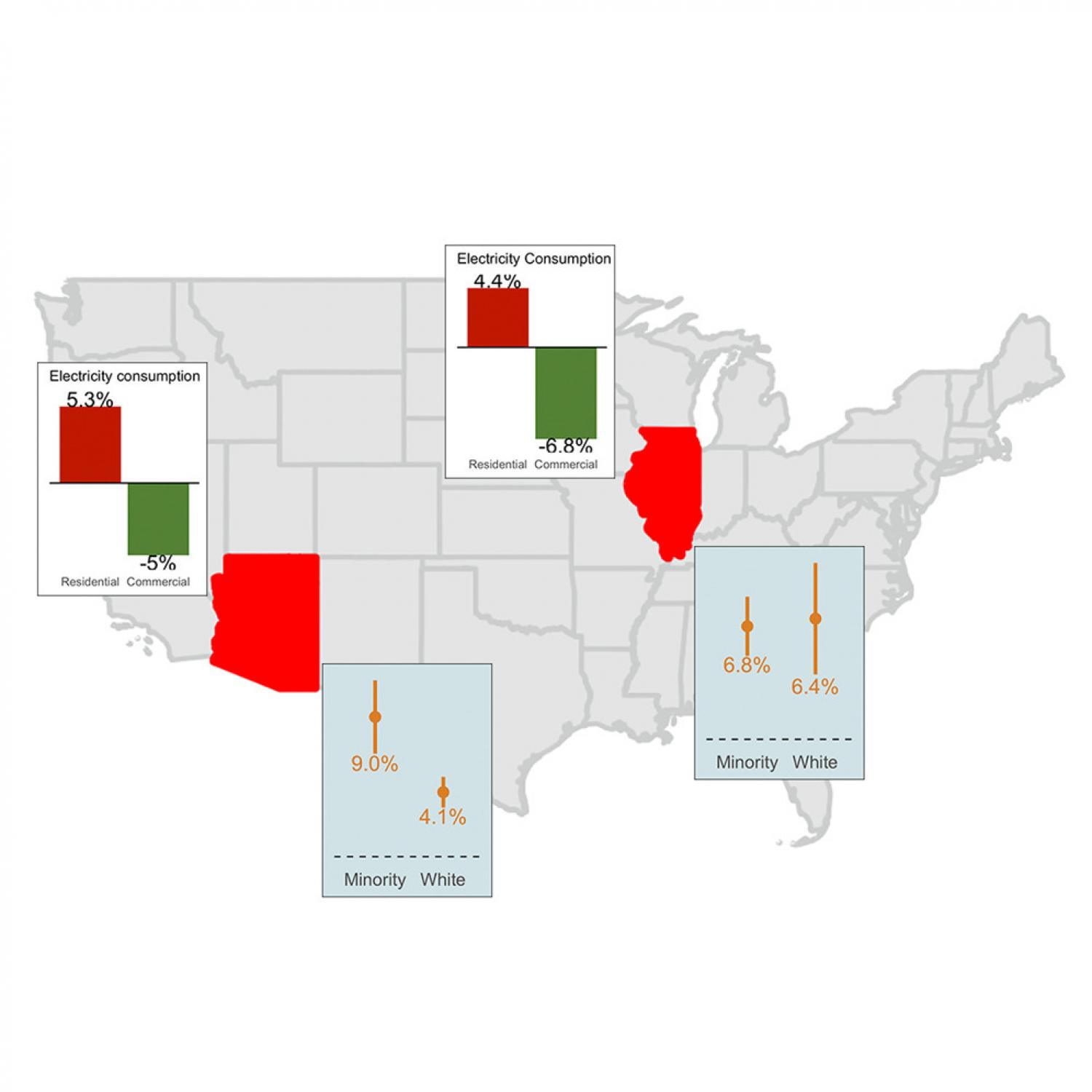
Elsevier, iScience, Volume 24, 19 November 2021
The COVID-19 pandemic has exacerbated energy insecurity and economic hardship among vulnerable populations. This paper provides robust empirical evidence of the degree to which COVID-19 mitigation measures, especially the mandates of school closure and limiting business operations, have impacted electricity consumption behavior in low-income and ethnic minority groups in the United States. We use a regression discontinuity design applied to individual-consumer-level high-frequency smart meter data in Arizona and Illinois to highlight the disparities in mitigation measure impacts. We find that the mandates of school closures and limiting business operations increase residential electricity consumption by 4–5%, but reduce commercial electricity consumption by 5–8%. Considerable heterogeneity is observed across income and race: low-income and ethnic-minority populations experience a larger electricity consumption increase, reflecting the disproportionate impact of COVID-19 on electricity insecurity in the residential sector. Policies that address energy insecurity, especially during the pandemic, become essentially important.
